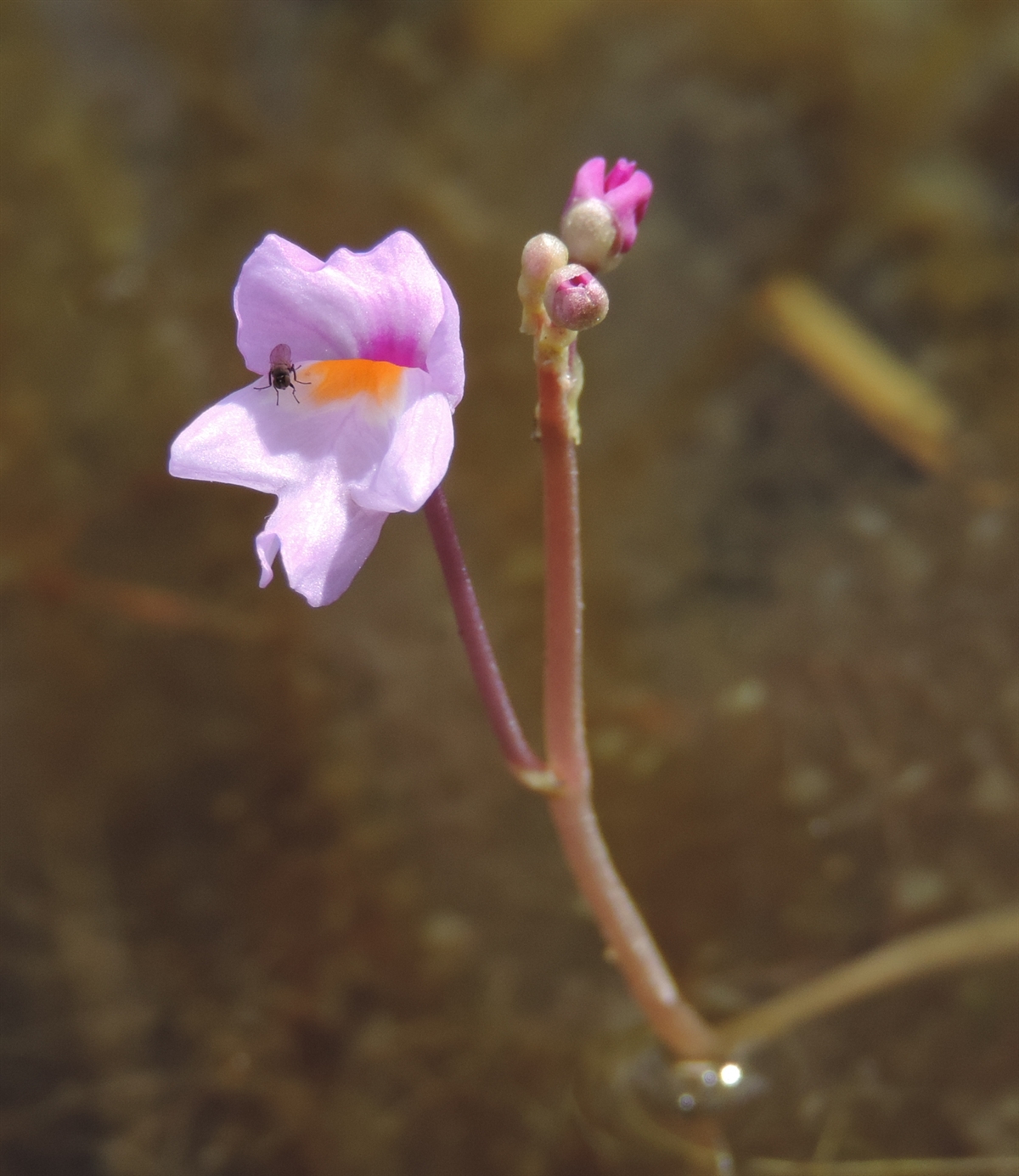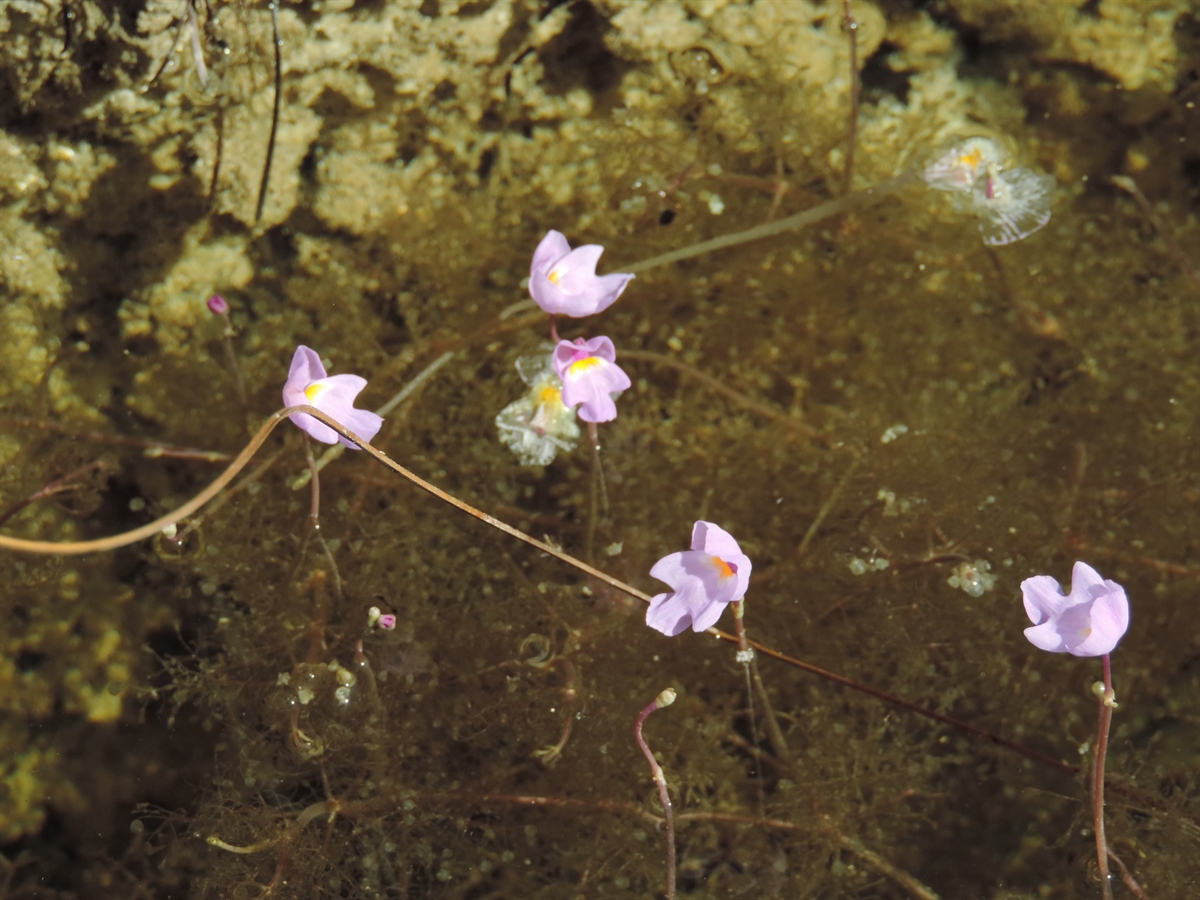Habit: Utricularia purpurea grows as a filamentous branching aquatic floater that is rooted. The slender branches are divided into filiform leaves. The stems and leaves are to 20 cm in length, grayish green, and can have bladder traps
The complete, perfect, zygomorphic flowers are arranged in few flowered racemes. The calyx has 2 sepals with the lower one larger. The corolla has 4 purple petals with the lower petal enlarged and 3-lobed and with a yellow orange spot. There are 2 stamens fused together. The carpel has a superior ovary with a single locule. The fruit is a capsule at maturity.
Habitat: Utricularia purpurea grows in Fresh Water Wetlands and in well field canals.
Distribution: Utricularia purpurea occurs in the northern Pine Islands of the Lucayan Archipelago, Cuba, Jamaica, Central America, and eastern Canada and the United States.
Medicinal/Cultural/Economic usage: Utricularia purpurea is not known to be used medicinally in the Lucayan Archipelago.
Utricularia purpurea is a carnivorous plant that traps small aquatic insects in the bladders that form on the stems. When an insect swims close it triggers a mechanism that sucks the insect inside, and it then digests it. Utricularia purpurea grow in nutrient poor waters and soils and digest the insects for organic nitrogen primarily.

